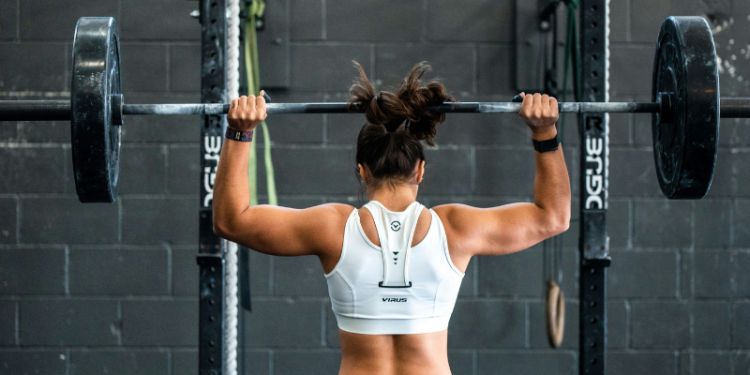The history of women weight training

In an interview on BBC Radio Breakfast, Dr Hannah Campbell, Lecturer in Applied Physiology, explains the rise of women weight training.
Lifting weights dates back to the ancient eras of Greece, China, and Egypt. It was most popular in men to showcase their physical strength and ‘prove’ their manhood, with men weight training through activities such as stone lifting, stone throwing and wrestling, alongside push-ups and pull-ups.
This practice was deeply rooted in societal norms, emphasizing physical prowess as a marker of masculinity and status.
It wasn’t until the 1900s when weight training started to catch the attention of women, spurred by the rising popularity of weightlifting in Eastern Europe and the United States of America.
Women who wanted to compete, such as trailblazers Ivy Russell and Abbye Stockton, were required to promote and fundraise for the overseas events which brought the idea of women weightlifting to a new and much larger international audience.
Their efforts culminated in greater awareness and recognition, laying the groundwork for women’s Olympic weightlifting in the 1940s. However, weightlifting in everyday sport and exercise was still uncommon, with women instead being encouraged to enjoy ‘feminine appropriate’ sports and games, such as gymnastics.
The latter half of the 20th century saw a wave of fitness trends, from hula hoops (1950s-60s) to Jazzercise and step aerobics (1970s-80s), and Pilates and power walking (1990s-2000s). Alongside these were popular diets like Atkins and Weight Watchers and innovations like spandex, exercise machines (think ThighMaster), and VHS workout tapes.
Amid this fitness craze, women’s weightlifting quietly gained ground. The first national and international competitions emerged in the 1970s, and by the 1980s, the International Weightlifting Federation officially included women. The sport reached a historic milestone when women’s Olympic weightlifting debuted at the Sydney Games in 2000.
By that year, only 10% of women participated in regular strength training—but the stage was set for a seismic shift.
A new era in sport and exercise
By 2024, the number of women participating in regular strength training had soared to 27%.
This surge can be attributed to growing awareness of the health benefits of weightlifting, with research highlighting its importance for bone density, muscle health, and overall fitness. Unlike earlier eras when aerobic exercise dominated fitness culture, strength training is now recognised as an essential component of a balanced workout routine.
Social media has also played a pivotal role in this transformation, acting as a catalyst for a fitness revolution. Platforms like Twitter, Instagram and TikTok reach billions of people worldwide every day and they have helped to showcase relatable role models (fitness ‘influencers’), inspiring people to adopt strength training as part of their routines.
The visibility of women confidently lifting weights has helped dismantle stereotypes and encourage inclusivity in gyms worldwide.
From ancient strength competitions to modern-day empowerment, weight training continues to evolve, transcending its origins to become a universal symbol of health and self-improvement.
With growing research and awareness of the female health gap, alongside recognition of the vital role muscle function plays in overall health, weight training is poised to become even more integral to women’s lives. Advances in personalized medicine and tailored fitness approaches will further drive participation, supporting women and girls across every stage of life to build strength, resilience, and well-being.
Listen to Dr Campbell’s interview with Rina Ahmed about the rise of strength training on BBC Radio Leeds (clips starts at 1:26:00)
Photo credit: John Arano from Unsplash.




